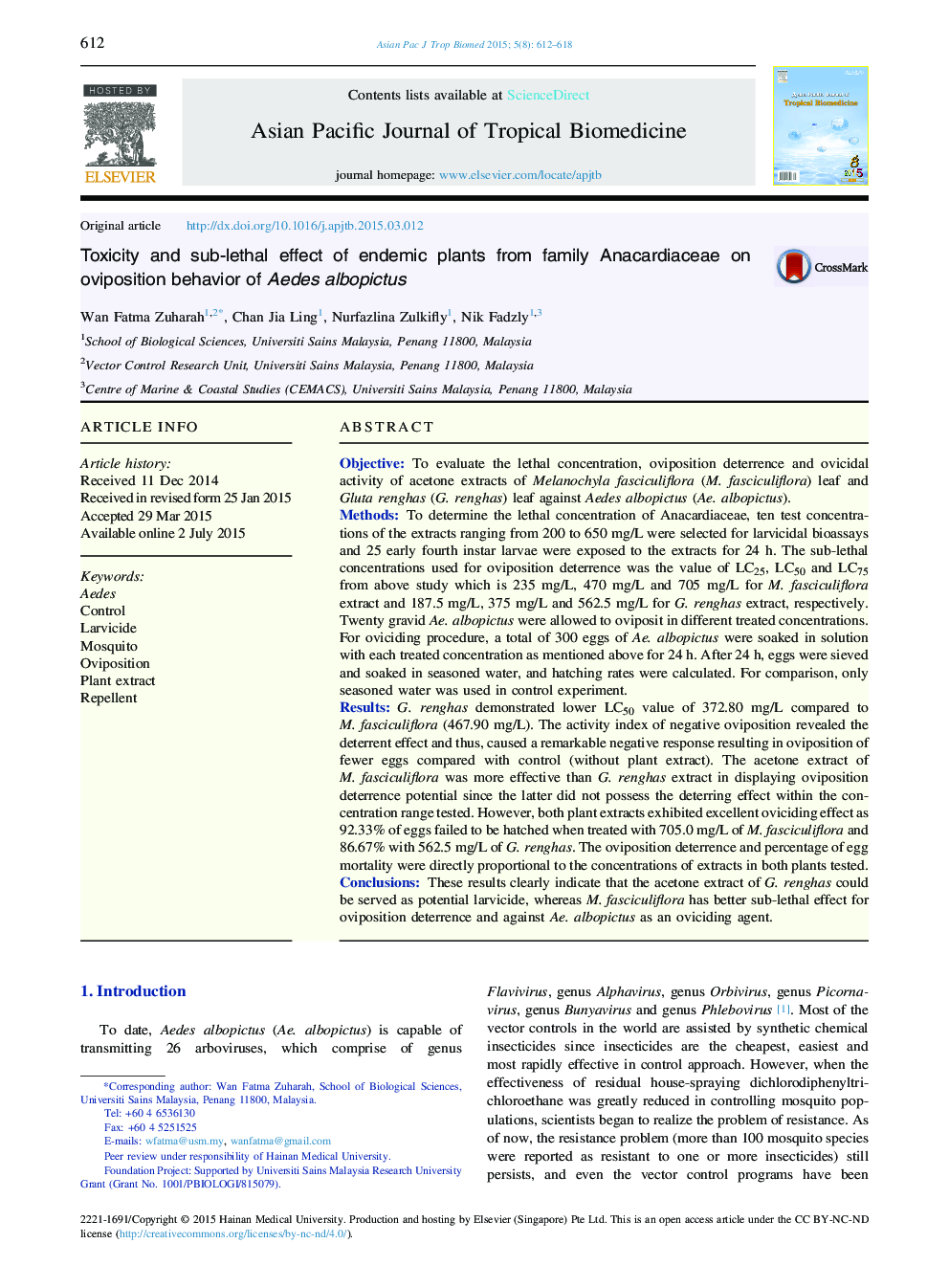| کد مقاله | کد نشریه | سال انتشار | مقاله انگلیسی | نسخه تمام متن |
|---|---|---|---|---|
| 2032476 | 1542874 | 2015 | 7 صفحه PDF | دانلود رایگان |

ObjectiveTo evaluate the lethal concentration, oviposition deterrence and ovicidal activity of acetone extracts of Melanochyla fasciculiflora (M. fasciculiflora) leaf and Gluta renghas (G. renghas) leaf against Aedes albopictus (Ae. albopictus).MethodsTo determine the lethal concentration of Anacardiaceae, ten test concentrations of the extracts ranging from 200 to 650 mg/L were selected for larvicidal bioassays and 25 early fourth instar larvae were exposed to the extracts for 24 h. The sub-lethal concentrations used for oviposition deterrence was the value of LC25, LC50 and LC75 from above study which is 235 mg/L, 470 mg/L and 705 mg/L for M. fasciculiflora extract and 187.5 mg/L, 375 mg/L and 562.5 mg/L for G. renghas extract, respectively. Twenty gravid Ae. albopictus were allowed to oviposit in different treated concentrations. For oviciding procedure, a total of 300 eggs of Ae. albopictus were soaked in solution with each treated concentration as mentioned above for 24 h. After 24 h, eggs were sieved and soaked in seasoned water, and hatching rates were calculated. For comparison, only seasoned water was used in control experiment.ResultsG. renghas demonstrated lower LC50 value of 372.80 mg/L compared to M. fasciculiflora (467.90 mg/L). The activity index of negative oviposition revealed the deterrent effect and thus, caused a remarkable negative response resulting in oviposition of fewer eggs compared with control (without plant extract). The acetone extract of M. fasciculiflora was more effective than G. renghas extract in displaying oviposition deterrence potential since the latter did not possess the deterring effect within the concentration range tested. However, both plant extracts exhibited excellent oviciding effect as 92.33% of eggs failed to be hatched when treated with 705.0 mg/L of M. fasciculiflora and 86.67% with 562.5 mg/L of G. renghas. The oviposition deterrence and percentage of egg mortality were directly proportional to the concentrations of extracts in both plants tested.ConclusionsThese results clearly indicate that the acetone extract of G. renghas could be served as potential larvicide, whereas M. fasciculiflora has better sub-lethal effect for oviposition deterrence and against Ae. albopictus as an oviciding agent.
Journal: Asian Pacific Journal of Tropical Biomedicine - Volume 5, Issue 8, August 2015, Pages 612–618